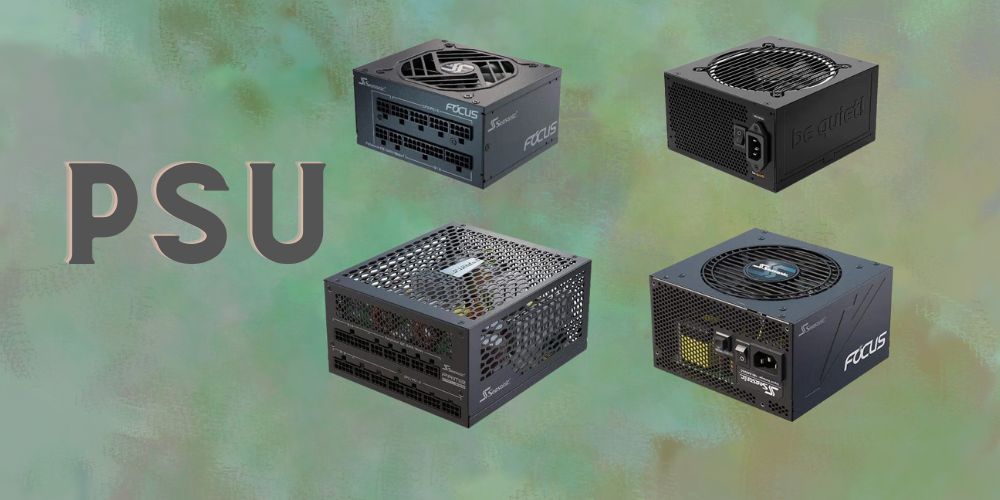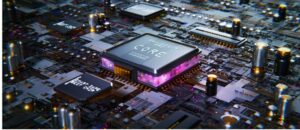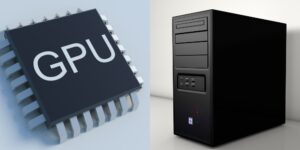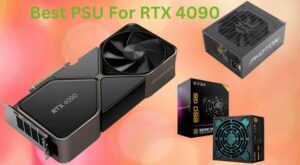How To Know Which PSU To Buy? Guide For Beginners
Choosing the right Power Supply Unit (PSU) for your computer is like selecting the heart of your system. It ensures every component gets the power it needs to function correctly. A poor PSU choice can lead to instability, hardware damage, and even catastrophic failures. Whether you’re building a new PC or upgrading an existing one, understanding what makes a good PSU is crucial. This article will guide you through the essential aspects of PSUs, from power requirements and efficiency ratings to key features and brand recommendations. By the end, you’ll be equipped with the knowledge to choose the perfect PSU for your needs, ensuring your computer runs smoothly and efficiently. Let’s dive in and explore how to know which PSU to buy and to help you make an informed decision for your next build or upgrade.
Understanding PSU Basics
What is a PSU?
A Power Supply Unit (PSU) is a critical component in a computer system responsible for converting alternating current (AC) from the wall outlet into direct current (DC) usable by internal components. It provides consistent and reliable electrical power to the motherboard, CPU, GPU, storage devices, and other peripherals. PSUs come in various wattages and form factors to accommodate different system requirements, ensuring stable operation and preventing damage from power fluctuations or insufficient power delivery.
Why is PSU Selection Important?
Selecting the right PSU to buy is crucial as it directly impacts system stability, performance, and longevity. An inadequate PSU may result in insufficient power delivery, leading to system crashes, instability, or even hardware damage. Conversely, an overpowered PSU may waste energy and incur unnecessary costs. Proper PSU selection ensures compatibility with components, sufficient power output for current and future needs, and adherence to safety standards, safeguarding the integrity and reliability of the entire computer system.
Types of PSUs:
Non-Modular PSUs
Non-modular PSUs come with all cables permanently attached. This can result in a clutter of unused cables inside your case, making cable management more challenging. While they are typically more affordable, the lack of flexibility can lead to poor airflow and a messier build. Non-modular PSUs are best suited for budget builds or systems where cable management isn’t a priority.
Semi-Modular PSUs
Semi-modular PSUs offer a middle ground between non-modular and fully modular units. They have some essential cables permanently attached, such as the motherboard and CPU power cables, while allowing you to add or remove other cables as needed. This flexibility improves cable management and airflow without significantly increasing cost. Semi-modular PSUs are a great choice for most users who want a balance of convenience and affordability.
Fully Modular PSUs
Fully modular PSUs provide the ultimate in cable management and customization. Every cable can be detached, allowing you to use only the cables you need for your build. This results in a cleaner and more organized setup, with improved airflow and easier maintenance. Fully modular PSUs tend to be more expensive but are ideal for high-end builds and users who prioritize a tidy and efficient system.
Advantages and Disadvantages:
1. Non-modular PSUs
- Advantages: Lower cost, suitable for simple builds.
- Disadvantages: Poor cable management, cluttered interior, reduced airflow.
2. Semi-Modular PSUs
- Advantages: Better cable management than non-modular, cost-effective.
- Disadvantages: Still have some permanently attached cables, slightly higher cost than non-modular.
3. Fully Modular PSUs
- Advantages: Excellent cable management, optimal airflow, easy maintenance, and upgrades.
- Disadvantages: Higher cost, potentially overkill for simple builds.
Choosing the Right Type for Your Build:
When deciding which type of PSU to buy, consider your budget, build complexity, and personal preferences for cable management. If you’re on a tight budget or building a simple system, a non-modular PSU might suffice. For a more balanced approach, a semi-modular PSU offers improved management without breaking the bank. If you want the best possible setup with minimal cable clutter and maximum flexibility, a fully modular PSU is the way to go.
PSU Efficiency Ratings (80 PLUS)
PSUs come with efficiency ratings, often denoted as 80 PLUS certifications. These ratings indicate how efficiently a PSU converts AC power into DC power. The higher the rating, the more efficient the PSU is, leading to less wasted energy and lower electricity bills.
80 PLUS Certification Levels
- 80 PLUS: Represents the baseline level of efficiency.
- 80 PLUS Bronze: Offers increased efficiency over the basic 80 PLUS.
- 80 PLUS Silver: Provides even higher efficiency than Bronze.
- 80 PLUS Gold: A popular choice, balancing efficiency and cost.
- 80 PLUS Platinum: Delivers high efficiency, suitable for demanding setups.
- 80 PLUS Titanium: The pinnacle of efficiency, ideal for high-performance systems.
How To Know Which PSU To Buy? Factors To Consider:
Understanding Wattage:
- Wattage refers to the maximum amount of power a PSU can deliver to your components. It’s crucial to choose a PSU with sufficient wattage to accommodate your system’s needs, including the CPU, GPU, storage drives, and peripherals.
- Calculate the total power consumption of your components using online calculators or manufacturer specifications. Aim for a PSU with a wattage slightly higher than your calculated requirement to provide headroom for upgrades and ensure optimal efficiency.
Efficiency Ratings:
- PSU efficiency ratings, such as 80 Plus Bronze, Silver, Gold, Platinum, and Titanium, indicate how effectively the PSU converts AC power from the wall outlet into DC power for your components.
- Higher efficiency ratings result in less wasted energy, reduced heat output, and lower electricity bills. Consider investing in a PSU with an 80 Plus Gold or higher rating for optimal efficiency and long-term savings.
Form Factors and Compatibility:
- PSUs come in various form factors, including ATX, SFX, and TFX, to accommodate different case sizes and mounting configurations. Ensure compatibility by selecting a PSU that matches your case’s form factor and dimensions.
- Consider factors such as cable length, connector types, and clearance for proper cable management and airflow within your case. Modular PSUs offer flexibility by allowing you to connect only the cables you need, reducing clutter and improving airflow.
Quality and Reliability:
- Choose a PSU from reputable brands known for their quality, reliability, and adherence to industry standards. Look for certifications such as 80 Plus, NVIDIA SLI, or AMD CrossFire to ensure compatibility and performance.
- Read reviews and user feedback to gauge the reliability and longevity of a PSU model. Investing in a high-quality PSU from a trusted manufacturer can prevent potential issues and provide peace of mind.
Consider Future Upgrades:
- Anticipate future upgrades or additions to your system when selecting a PSU. Opt for a higher wattage PSU than your current requirements to accommodate potential upgrades such as a more powerful CPU, GPU, or additional storage drives.
- Future-proofing your PSU ensures compatibility and flexibility for future system expansions, preventing the need for a PSU upgrade down the line.
Noise Levels and Cooling:
- Pay attention to the cooling system and noise levels of the PSU, especially if you prioritize a quiet computing environment. PSUs with larger, quieter fans, or zero fan modes under low loads, can minimize noise while providing effective cooling.
- Consider the airflow direction and ventilation requirements of your case to ensure proper cooling and airflow management. Optimal thermal performance prolongs the lifespan of your components and maintains system stability.
Budget and Value:
- Establish a budget for your PSU based on your system requirements and priorities. While premium PSUs with advanced features and higher efficiency ratings may come with a higher price tag, they offer long-term value and reliability.
- Balance your budget with the need for quality, efficiency, and performance. Avoid skimping on the PSU, as it’s a critical component that directly impacts the stability and longevity of your entire system.
Common PSU Mistakes to Avoid:
1. Underestimating Power Needs
One of the most frequent mistakes is underestimating your power requirements. Choosing a PSU that doesn’t provide enough wattage can lead to system instability, random shutdowns, and potential hardware damage. Always calculate the power consumption of your components and add a safety margin to ensure your PSU can handle the load.
2. Ignoring Efficiency Ratings
Efficiency ratings, such as the 80 PLUS certification, are crucial for both energy savings and reducing heat output. Ignoring these ratings can result in higher electricity bills and a hotter system. Aim for a PSU with at least an 80 PLUS Bronze rating to ensure good efficiency and reliable performance.
3. Overlooking the Importance of Quality
Not all PSUs are created equal. Cheaper models often use lower-quality components, which can fail prematurely and even damage other parts of your system. Investing in a well-built PSU from a reputable brand ensures long-term reliability and stability.
4. Poor Cable Management
Neglecting cable management can lead to poor airflow and increased temperatures inside your case. A cluttered build not only looks untidy but can also hinder cooling performance. Opt for modular or semi-modular PSUs to simplify cable management and improve airflow.
5. Failing to Plan for Future Upgrades
When selecting a PSU, consider your future upgrade plans. Choosing a PSU with just enough wattage for your current build can limit your ability to upgrade components later on. It’s wise to select a PSU with some headroom to accommodate future additions or upgrades to your system.
Future-Proofing Your PSU:
1. Planning for Upgrades
When choosing a PSU, it’s important to think ahead and plan for future upgrades. Technology advances rapidly, and your power needs may increase over time as you add more components or upgrade to more powerful hardware. Select a PSU that not only meets your current requirements but also provides additional wattage to accommodate future additions. This ensures you won’t need to replace your PSU when you decide to upgrade your graphics card, add more storage, or install additional peripherals.
2. Ensuring Longevity
Investing in a high-quality PSU can significantly extend the lifespan of your entire system. Look for units with robust build quality and premium components, such as Japanese capacitors, which are known for their durability and reliability. A PSU with a higher efficiency rating, like 80 PLUS Gold or Platinum, typically uses better components and generates less heat, contributing to a longer lifespan.
3. Choosing a Reputable Brand
Opting for a PSU from a reputable manufacturer can give you peace of mind. Brands like Corsair, Seasonic, and EVGA are renowned for their reliable products and excellent customer support. These companies often provide lengthy warranties, which is a good indicator of their confidence in the product’s longevity and performance.
4. Modular Flexibility
Modular and semi-modular PSUs offer greater flexibility and cleaner builds, making it easier to manage cables and improve airflow. This is especially beneficial if you plan to upgrade your system components in the future, as it allows for easier installation and removal of cables.
5. Monitoring and Maintenance
Regularly monitor your PSU’s performance and keep it clean to ensure it operates efficiently. Dust buildup can impede airflow and cause overheating. Use compressed air to clean the PSU and check for any signs of wear or issues. This maintenance can help extend the life of your PSU and prevent unexpected failures.
Installation Tips:
1. Safety Precautions
Before you begin, always ensure that your computer is turned off and unplugged from the power source. Ground yourself by touching a metal object to discharge any static electricity, which can damage sensitive components. It’s also wise to work on a non-conductive surface and use an anti-static wrist strap if you have one.
2. Step-by-Step Installation Guide
- Prepare Your CaseStart by clearing space inside your case. Remove any existing PSU if you’re replacing one, and tidy up any loose cables to make room for the new unit.
- Mount the PSUPlace the PSU in its designated spot in the case, usually at the bottom or top, depending on your case design. Align the screw holes on the PSU with those on the case and secure it using the provided screws. Make sure the PSU fan is facing the proper direction for optimal airflow—typically, if there’s a vent on the bottom of your case, the fan should face downwards.
- Connect the CablesBegin by connecting the essential power cables to the motherboard:
- 24-pin ATX connector: This is the main power cable for the motherboard.8-pin (or 4+4 pin) CPU power connector: This powers the CPU.
- PCIe connectors: These power the GPU. Ensure you use the correct 6-pin or 8-pin connectors.SATA/Molex connectors: These power your storage devices (SSDs, HDDs) and other peripherals like case fans or optical drives.
- Manage the CablesUse cable ties, Velcro straps, or the cable management features of your case to tidy up and secure the cables. Good cable management not only looks cleaner but also improves airflow, which helps keep your system cool.
- Double-Check ConnectionsBefore powering on your system, double-check all connections to ensure they are secure and correctly plugged in. Loose connections can cause your system to malfunction or not power on at all.
- Power OnPlug your computer back into the power source and switch on the PSU. Turn on your computer and check that all components are receiving power and functioning correctly. Listen for any unusual noises and monitor the system to ensure everything is running smoothly.
Conclusion
In How To Know Which PSU To Buy, choosing the right Power Supply Unit (PSU) is a decision that profoundly impacts system performance and longevity. By considering factors such as wattage, efficiency ratings, and compatibility, users can navigate the complex landscape of PSUs. Optimal choices lead to stable power delivery, energy efficiency, and the safeguarding of valuable components. This guide has unravelled the intricacies, empowering users to make informed decisions tailored to their specific needs, whether they are gamers, content creators, or professionals. Armed with this knowledge, selecting the ideal PSU becomes not just a necessity but an opportunity to enhance the overall computing experience.
FAQs: How To Know Which PSU To Buy?
1. What happens if I choose a PSU with too low wattage?
- Choosing a PSU with too low wattage can lead to system instability and crashes. It may also limit your ability to upgrade your components in the future.
2. Are modular PSUs worth the extra cost?
- Modular PSUs offer better cable management and airflow, making them worth the investment for most builders, especially those with gaming or high-performance PCs.
3. Can I use a PSU from an older computer in a new build?
- It’s generally not recommended to use an old PSU in a new build, as older PSUs may lack the necessary connectors and safety features for modern components.
4. Is an 80 PLUS Platinum PSU necessary for a standard office computer?
- For a standard office computer, an 80 PLUS Bronze or Silver PSU should suffice. Platinum or Titanium PSUs are more suitable for power-hungry systems.
5. How do I calculate the wattage requirements for my PC components?
- To calculate wattage requirements, add up the power consumption values (in watts) of your CPU, GPU, motherboard, RAM, and other components. Then, add a buffer of around 20% for safety and future upgrades.
Last Updated on 29 June 2024 by Ansa Imran

Ansa Imran, a writer, excels in creating insightful content about technology and gaming. Her articles, known for their clarity and depth, help demystify complex tech topics for a broad audience. Ansa’s work showcases her passion for the latest tech trends and her ability to engage readers with informative, well-researched pieces.







